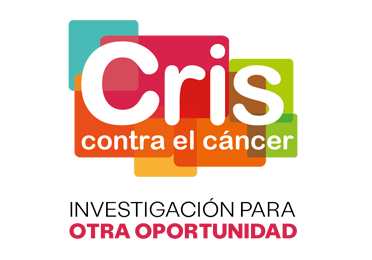
- The five-year follow up data from patients in the KEYNOTE-048 trial have been reported, with the participation of Dr. Irene Braña, researcher at the Thoracic Tumour and Head and Neck Cancer Group and oncologist at the Vall d’Hebron University Hospital, part of the Vall d’Hebron Campus. This trial led to the approval of pembrolizumab in first-line treatment for most patients with metastatic or recurring head and neck squamous cell carcinoma.
- The data gathered in this update continue to show that the greater the expression of PD-L1, a protein that acts as a brake on the immune system, the greater also is the efficacy of pembrolizumab.
- Specifically, this monoclonal antibody, alone or combined with chemotherapy, improved overall survival compared to conventional treatment in patients scoring equal to or over 1 on the combined positive score, a scale used as a biomarker for quantifying the presence of the PD-L1 protein in tumours.
Head and neck squamous cell carcinoma is a heterogeneous group of tumours and the seventh most common cancer in the world. Until recently, standard treatment consisted of a combination of platinum-based chemotherapy and the EGFR inhibitor cetuximab, known as the EXTREME regimen. However, the results from the KEYNOTE-048 phase III trial, which were published in Journal of Clinical Oncology1, showed a benefit from monotherapy with pembrolizumab, an anti PD-L1 monoclonal antibody, or the combination of pembrolizumab with chemotherapy as first-line treatment in patients with recurring or metastatic head and neck cancer expressing PD-L1.
Specifically, the KEYNOTE-048 study showed the benefit of using pembrolizumab in patients with a combined positive score (CPS) equal to or over 1, representing from 80 to 85 percent of patients. The study also showed that the benefit of pembrolizumab, alone or combined, is greater the higher the CPS.
Dr. Irene Braña, researcher at the Thoracic Tumour and Head and Neck Cancer Group, took part in a study presented at ESMO which analysed the results of a 5-year follow-up of patients from this KEYNOTE-048 trial2. “With a long follow-up, we have seen that the first-line treatment with pembrolizumab or pembrolizumab and chemotherapy continued to show lasting anti-tumour activity and manageable safety”, explains Dr. Irene Braña.
The greater the PD-L1 expression, the better the results
The analysis of the KEYNOTE-084 trial data considered patients’ CPS, an indicator that helps determine the amount of PD-L1 in tumours and infiltrated immune cells. It is calculated by measuring the number of cells showing PD-L1 staining (tumour and immune system cells), which is divided by the total number of viable tumour cells. This value was then used to subdivide patients into those with a CPS under 1, those with a value from 1 to 19 and those with a value equal to or over 20.
In this recent update, patients with a CPS under 1 were not considered, and it continued to show how the benefit of including pembrolizumab increased when CPS was also higher. As Dr. Irene Braña explains, “this showed that, when the CPS index was equal to or over 20, pembrolizumab in monotherapy produced a 5-year survival rate of 19.9% compared to 7.4% with EXTREME, and in the groups receiving the pembrolizumab and chemotherapy combination, 23.9% survival was obtained, compared to 6.4%”, She also points out that in patients with a CPS equal to or above 1, 5-year survival rates were 15.4% compared to 5.5% with monotherapy and 18.2% compared to 4.3% with combined therapy.
“But, independently of the CPS, we have seen that all patients who express PD-L1 show a benefit, and the 5-year survival rate is 14.4% compared to 6.5% with pembrolizumab monotherapy, and 16% compared to 5.2% with the treatment combined with chemotherapy”, adds Dr. Braña. The expert concludes that “these results further support pembrolizumab or pembrolizumab and chemotherapy as the first-line standard care in recurring or metastatic head and neck squamous cell carcinoma”.
References:
1 Burtness B, Rischin D, Greil R, Soulières D, Tahara M, de Castro G Jr, Psyrri A, Brana I, Basté N, Neupane P, Bratland Å, Fuereder T, Hughes BGM, Mesia R, Ngamphaiboon N, Rordorf T, Wan Ishak WZ, Ge J, Swaby RF, Gumuscu B, Harrington K. “Pembrolizumab Alone or With Chemotherapy for Recurrent/Metastatic Head and Neck Squamous Cell Carcinoma in KEYNOTE-048: Subgroup Analysis by Programmed Death Ligand-1 Combined Positive Score”. J Clin Oncol. 2022 Mar 25:JCO2102198. doi: 10.1200/JCO.21.02198. Epub ahead of print. PMID: 35333599.
2 Tahara M, Greil R, Rischin D, Harrington KJ, Burtness B, De Castro Jr. G, Psyrri A, Braña I, Neupane P, Bratland Å, Fuereder T, Hughes BGM, Mesia Nin R, Ngamphaiboon N, Rordorf T, Wan Ishak WZ, Lin J, Gumuscu B, Lerman N, Soulieres D. “Pembrolizumab with or without chemotherapy for first-line treatment of recurrent/metastatic (R/M) head and neck squamous cell carcinoma (HNSCC): 5-year results from KEYNOTE-048”. Annals of Oncology (2022) 33 (suppl_7): S295-S322. https://doi.org/10.1016/annonc/annonc1056
Details of the presentation at the ESMO 2022 Congress
Mini oral session: Head & neck cancer
Date: Saturday, 10 September
Time 10:15. 11:45
659MO – Pembrolizumab with or without chemotherapy for first-line treatment of recurrent/metastatic (R/M) head and neck squamous cell carcinoma (HNSCC): 5-year results from KEYNOTE-048
Speaker: Denis Soulieres (Montreal, Canada)
Lecture Time: 10:45 – 10:50














